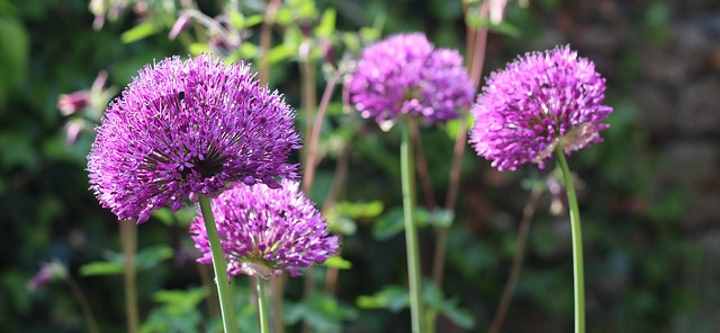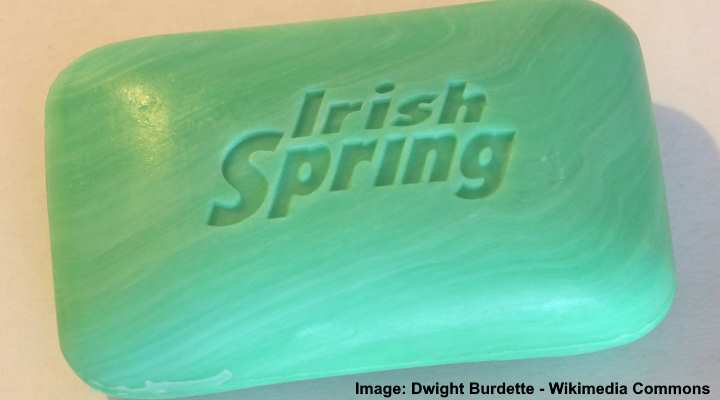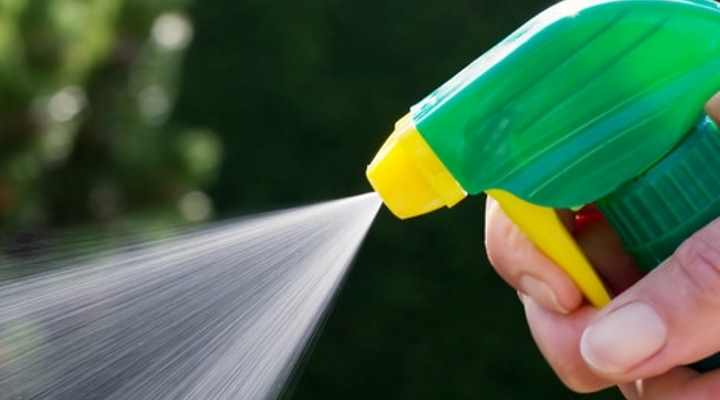Rabbits may appear to be innocent, cuddly creatures, but there are a variety of reasons why they should not be allowed in your garden or yard. Tender shoots, leafy greens, veggies, flowers, and shrubs are among the favorite foods of rabbits. A multi-method approach is required to prevent rabbits in your yard or garden. Fences, growing plants that rabbits dislike, and a variety of deterrents are all important to safeguard your garden against plant-destructive bunnies.
The Leporidae family of small, long-eared furry animals includes rabbits. Wild rabbits come in thirteen distinct species, nine of which are found in North America. The eastern cottontail (Sylvilagus floridanus) is the most common rabbit species that cause problems.
This is the species that ate your garden plants and flowers, most likely. A guide to preventing rabbits from entering gardens may be found here. Protecting your vegetables, flowers, and fruits from rabbit destruction is possible in a variety of ways that are humane.
The Best Ways to Get Rid of Rabbits
The finest way to get rid of rabbits in your garden or yard is with a multi-targeted strategy. Chicken wire embedded in the ground protects the garden perimeter and ornamental plants. Growing rabbit-resistant plants, using natural deterrents, and applying natural rabbit repellents to plants are some other ways to discourage wild bunnies.
In most cases, there is no single way to get rid of rabbits on your property. Continue reading to learn about different Rabbit deterrent techniques.
How to Identify Rabbits

Gray or brown, with long hind legs, big ears, and a short tail, the eastern cottontail is the most widespread rabbit species in North America. Bunnies live in bushes, hedgerows, or shallow holes, according to Pesky cottontail bunnies. Eastern cottontails, unlike many rabbit species, don’t dig burrows.
Rabbits are most active at dusk and dawn. Rabbits do the most harm to your clovers, tulips, lettuce, carrot tops, and other leafy veggies in your vegetable patch or flower bed when they’re doing this. Rabbit pellets, massive holes beneath shrubs or hedges, and damaged plant foliage, particularly on young, fragile shoots, are all signs that you have rabbits in your yard.
Why Keep Rabbits Out of Yards and Gardens
For a variety of reasons, rabbits are such a pest in yards and gardens. They grow quickly and breed frequently. As a result, rabbits might quickly overrun your yard if you don’t remove them quickly. In addition, rabbits eat vegetation all of the time. Rabbits chew nonstop on a variety of plants, which you may notice.
What Are the Plants that Rabbits Eat?
Wild rabbits in the garden are pests that eat anything. Bunny feeding habits are so frustrating because they prefer to eat young tender shoots. flowering plants, veggies, and young shrubs that perish before they get a chance to flourish are devoured by rabbits. A wide variety of ornamental plants are eaten by rabbits. Decorative flowers like petunias, pansies, zinnias, daisies, impatiens blossoms, coneflowers, and clematis are the favorite foods of rabbits. Roses, asps, sweet peas, and black-eyed Susans are among the plants that rabbits can eat.
A rabbit’s diet includes a wide range of garden plants, as well. Wild bunnies like many shrubs and perennial bulbs, particularly when young shoots emerge. Rabbits eat barberries, hawthorns, lilacs, and witch hazel. Unfortunately, a rabbit’s appetite is not safe from perennial bulbs. Because these plants bloom in late winter or early spring when food for rabbits is scarce, try to protect tulips, crocuses, and irises.
Lettuce, broccoli, peas, spinach, Swiss chard, and beets are among the vegetables that rabbits consume. Young pear trees, apple trees, blueberry plants, and gooseberry bushes will all be nibbled on by rabbits. Rabbits adore tomato plants, and they may harm fledgling tomato leaves on a vine when they eat them.
The leaves of a tomato plant, on the other hand, are poisonous in large quantities, so rabbits will not eat them. Check for signs of hornworms if something is nibbling on your tomato plant. Carrots aren’t a favorite rabbit snack like the lovely photos of bunnies, and though you may frequently observe them chewing soft carrot tops, they aren’t a favorite.
Rabbit-Resistant Plants
Planting flowers that rabbits don’t like will help keep rabbits out of your garden. Rabbits are constantly on the lookout for tasty plant morsels. You will help reduce the number of rabbit-friendly pests that arrive to your property if you grow rabbit-resistant plants.
Plants that are difficult to chew, taste unpleasant, or harm rabbits are generally avoided by them. Plants that have sharp prickles or jagged margins, for example, may help keep rabbits at bay. Further, strong-smelling blooms such as mint, yarrow, and lavender help to keep rabbits at bay. You could choose foliage that are leathery or fuzzy if you prefer.
resistant perennial plants Daylilies (Hemerocallis), yarrow (Achillea), salvia, torch lilies (Kniphofia uvaria), coreopsis, delphinium, and candytuft (Iberis sempervirens) all grow in the area.
Rabbit-resistant ground cover plants Vines, or creepers like as creeping myrtle (Vinca minor), catmint (Nepeta), lily of the valley (Convallaria majalis), wisteria, Virginia creeper (Parthenocissus quinquefolia), and ajuga (Ajuga reptans) are used to keep rabbits out of gardens.
Rabbit-resistant shrubs Cotoneaster (Cotoneaster horizontalis), evergreen boxwood (Buxus), viburnum, juniper shrubs (Juniperus), holly bushes (Ilex), and lavender plants (Lavandula) are all suitable candidates for planting in your yard to discourage them.
Rabbit-resistant bulbs Daffodils (Narcissus), garlic and onions, Spanish bluebells (Hyacinthoides hispanica), and netted iris (Iris reticulata) are alliums that discourage rabbits.
Rabbit-resistant annuals Pot marigold (Calendula), sweet alyssum (Lobularia maritima), geraniums (Pelargonium), and marigolds (Tagetes) are all suitable deterrents for rabbits.
Rabbit Damage

Rabbit damage in gardens and yards is readily visible, as it causes tree damage. Stems and leaves of plants that have cleanly severed damage at the ground level are a good indication of rabbit debility. Young shoots are the preferred diet of rabbits, so it’s recommended to inspect them. Early in the spring, when plants are starting to grow, rabbit plant damage is most severe. Rabbit damage can occur at any time of year, so it’s helpful to understand how to keep them out of your garden for good.
Young plants may not recover in the spring, making rabbit damage worse. Rabbits chew on twigs, bark, the stems of woody shrubs, and young buds at other times of the year, causing damage to plants. Tufts of rabbit fur caught on twigs and branches, poop that looks like little black coffee beans, or tell-tale signs of rabbits’ paws on the soil around headless plants are all indications that rabbits are entering your garden and destroying plants.
Rabbit Fence to Keep Rabbits Out of the Garden

Chicken wire fencing is a great way to keep rabbits out of your yard or garden. You might also fence in your rabbits to safeguard specific parts of your garden. Chicken wire can help rabbits avoid digging or hopping into your garden to eat your plants if it is correctly installed.
Install chicken wire mesh around the edge of your yard, garden, or flower bed that is 2 to 3 feet (0.6 to 1 m) high to keep rabbits out of your garden and yard. Rabbits are prevented from hopping over by this. Dig the mesh fence 6 inches (15 cm) into the earth to discourage rabbits from digging.
Installing specially designed rabbit fencing is a more robust method of keeping rabbits out of your garden. 16-gauge wire is used to create this rabbit protector, which is stronger than chicken wire fencing. Fences are also an excellent and cost-effective way to preserve vegetable patches from rabbit damage. You may securely attach chicken wire to a 2-foot (0.6-meter) high wooden frame that you set up around your veggies. Alternatively, to prevent rabbits from eating leafy greens, you can create row covers.
Rabbit-proof your garden or yard by looking for breaches or gaps in the ground at ground level if you already have a wall or fence around it. Rabbits can fit through openings as tiny as 3″ (7.5 cm) in diameter. To keep rabbits out of your garden, cover holes with chicken wire mesh or embed it 6″ (15 cm) in the ground and attach it to your fence.
How to Get Rid of Rabbits
Rabbits may still find a way into your yard, no matter how hard you try to keep them out. It’s time to do something if you see rabbits feeding on plants. Here are some ways to get rid of rabbits from your garden. Rabbits utilize their keen sense of smell to discover delectable decorative flowers, leafy veggies, and other plants. Rabbits don’t like pungent aromas, so you could plant decorative onions (alliums) in your garden.

Sprinkle cayenne pepper or chili powder on plants that rabbits are attempting to eat to deter them from your garden. Rabbits should be scared away by the spicy powder, and they should hop away quickly. Talcum powder is said to be used by some gardeners to keep rabbits away from their plants.
Its effectiveness has never been proven. You could try talc on the ground’s foliage as part of your pest management system if rabbits are a problem. Hang around your garden as a natural rabbit repellent with Irish Spring soap shavings in old nylon pantyhose. Rabbits are said to flee from plants and seek for sustenance due to the powerful-smelling odors.

Some natural ways to avoid deer may also be effective against cottontail bunnies, including the strong fragrance of Irish Spring soap. may be deterred by natural deer repellents that include dried bovine blood, garlic, and sulfured eggs. Rabbits will smell sulfuric and believe there is nothing delectable to eat.
Rabbits are said to be kept out of your garden by human or pet hair. re timid animals who flee at the first sign of danger. To discourage your prized decorative plants or veggies from eating them, spread human hair around them. Animal hair may be just as effective at preventing rabbits from entering your yard if you brush your pet dog or cat.
How to Repel Rabbits (Including Natural Rabbit Repellent)

As part of your integrated rabbit pest management system, you can make your own natural rabbit repellent. Making your garden unattractive to rabbits can help keep them out. Rabbits despise the smell of repellents for the most part. Rabbit repellent sprays and creams are widely available for purchase. These operate on the premise of irritating rabbits’ sense of smell, thus deterring them. Making your own natural rabbit repellent, on the other hand, is less expensive.
Natural Rabbit Repellent
You’ll need a large sealable container to make a natural repellent for rabbits. Water, five garlic cloves, a teaspoon of ground hot chili peppers, and one tablespoon of dish soap are the ingredients for a homemade natural rabbit repellent. Add all of the ingredients and shake well before filling the jar with one gallon (3.7 l) of water.
To infuse the ingredients, leave them out in the sun for two days. Strain the solution into a spray bottle to use on plants as a natural rabbit repellent. Use the spicy, garlicky rabbit repellent liquid liberally to protect plants that you want to save.
rabbits from munching on your plants and keeping them away. Repeat every week or after each rain to discourage rabbits from munching on your plants.
How to Keep Rabbits Out of the Garden Without a Fence

To keep rabbits out of a yard or garden, clear away garden trash. It may be difficult to build a barrier around a front or back yard from time to time. Rabbit control becomes more difficult when there is no fence. Without a fence, here are some ways to keep rabbits out of your garden:
- Eliminating all places where rabbits may hide is critical.
- Low-hanging branches should be trimmed.
- To discourage rabbits from visiting your garden, remove debris or clusters of dead foliage.
- Rabbit shelter sites should be seald off around decking and house foundations.
- To keep rabbits out of your garden, remove any weeds.
You might use a mix of deterrent strategies to defend your garden from rabbits without creating barriers. Spraying plants with a spicy solution, removing rabbit-friendly plants, growing rabbit-resistant plants, and scattering hair clippings around your plants are all examples of rabbit deterrent methods.
Other Ways to Keep Rabbits Out of the Yard
Detecting rabbit damage in gardens: chewed foliage, droppings, and uprooted plants is disheartening. If rabbits have become a major annoyance in your garden and are destroying it, what else can you do? Here are some ways to encourage rabbits not to devour plants:
Buy electronic rabbit deterrents to keep them out of the yard. These make an ultrasonic noise that rabbits are said to find unpleasant. The theory is that high-frequency sounds will repel invading rabbits whenever they come into range. Rabbits can become immune to these noises after a period of time.
Use rabbit scare tactics. You might want to try a variety of tactics to discourage frightened rabbits. Place a fake owl, for example, around your yard to scare off natural rabbit predators such as rubber snakes. Unfortunately, they may grow accustomed to them and stop noticing them over time. They may be a quick fix in the interim. You could also frighten rabbits away from your yard by installing wind chimes or dazzling revolving things.
Get a pet to keep rabbits away. In keeping rabbits out of your garden, the phrase “man’s best friend” might come in handy. Dogs are often chasing anything that enters their area. Wild rabbits should eventually be able to avoid your yard.
Trap rabbits humanely. Rabbit populations in your garden may be reduced by using humane traps. It’s vital, however, to be sure of what you’re doing. Rabbits may get defensive if they are trapped. In most circumstances, contacting a professional pest exterminator and understanding what local regulations regarding capturing creatures on your land are.
